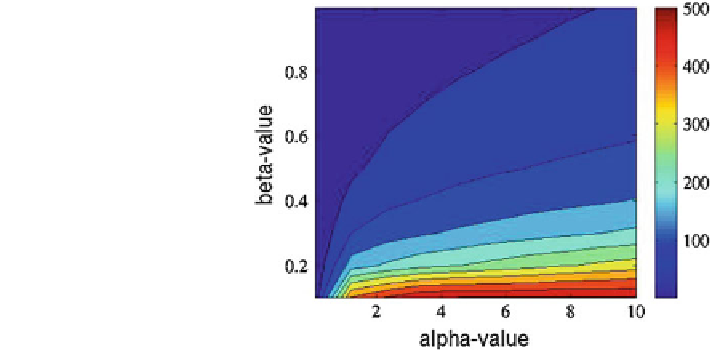Biomedical Engineering Reference
In-Depth Information
Fig. 4 The engulfment time
versus cell stiffness, a
;
and
cell mobility, b
force onto the substrate. This force generates a strain field around the cell that is
sensed by the other cells if the strain energy density exceeds a certain threshold. In
this way cells that are distant from each other sense each other's presence and
hence these cells communicate with one-another, if they are not too far away from
each other. This inter-cell communication over substrates through mechanical
forces and sensing was experimentally observed by Byrne and Drasdo [
2
]. In this
model, the deformation of the cells is not modeled, and cells are treated as circles
with a constant radius R and hence only the coordinate positions of the cell centres
need to be computed and stored. In the present manuscript, we will disregard the
randomness in the motion of the cells. In [
1
] a random contribution to cell
movement is introduced via a uniform probability distribution. One could improve
this formulation through a standard normal distribution so that the stochastic
component is built up by a Wiener process. Besides movement of cells, we also
incorporate the basic biological processes like cell division and death. Despite the
fact that cell division and death can be predicted more-or-less if the entire history
of a cell is known, these two fundamental processes are modeled as stochastic
processes. The reason is that the history of the cells is not known and that the
circumstances, although modeled as idealized, are not known well. In the model,
we consider n
ð
t
Þ
cells. Due to cell division and death the integer n depends on
time. These cells are able to divide or die with respective probabilities p and q per
unit of time. Further, the viable cells pull the substrate with a force F
;
hence for
cell i, we have
(
F
;
if the cell is viable
F
i
¼
ð
27
Þ
0
;
else
The cells sense the strain energy density and the direction of the largest increase of
this parameter, i.e. the gradient. Given a cell radius R and a Young's Modulus of

Search WWH ::

Custom Search